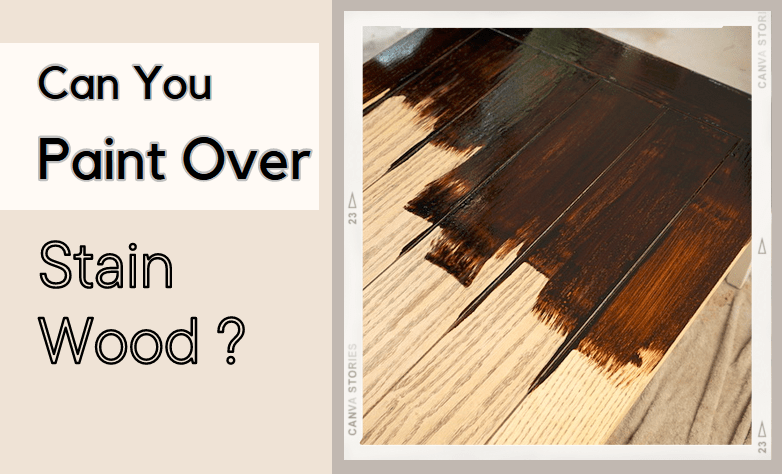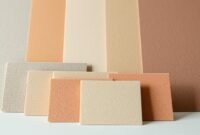Breathing new life into your stained wood furniture, cabinetry, or trim can be daunting. Many homeowners wonder if it’s possible to paint over stained wood without compromising the final result.
The good news is that with proper preparation and technique, painting over stained wood is not only possible but can yield excellent results. Before diving into the painting process, it is crucial to understand some basic knowledge about this topic.
In choosing the right paint, consider whether an oil-based or water-based formula is best for your project. Oil-based paints are renowned for their durability and rich finish, while water-based paints offer easier cleanup and quicker drying times. The choice between the two depends on the project’s requirements and the desired outcome.
Can You Paint Over Stain Wood?
Quick answer: Yes. You can paint over stained wood, whether a piece of furniture or a structural element. The key to success lies in thorough preparation and choosing the right type of paint.
Painting over stained wood is a great way to refresh your home without stripping off the existing stain. However, there are essential steps to ensure a long-lasting, professional-looking finish.
Read also: How to Get Spray Paint Off Your Hands?

How to Paint Over Stained Wood?
Before you begin painting, properly preparing the wood surface is crucial. This process involves several steps:
● Clean the Surface
Before painting wood stains, you must clean the surface thoroughly to remove any dirt, dust, or contaminants that may affect the paint’s adhesion.
Begin by wiping down the stained wood with a damp cloth to remove dust, dirt, and grime. If the surface is greasy, use a mild detergent solution to clean it.
● Lightly Sand the Surface
A rough texture will enable the paint to adhere better to the stained wood after it has been sanded lightly. Use fine-grit sandpaper (150-180 grit) and sand toward the wood grain.
● Remove Sanding Dust
Removing all the dust and residue created during the process is critical. You can do this using a vacuum or a tack cloth. Leaving sanding dust on the surface can result in a rough finish.
● Apply a Primer
Opt for a high-quality primer that’s specifically formulated for stained wood applications. The priming step is indispensable, as it effectively blocks the original stain from seeping through the top coated paint, thereby ensuring a consistent and even color throughout. This foundation is critical for a polished and long-lasting finish.
● Paint the Surface
When choosing your paint, decide between latex paint, known for its ease of use and fast drying time, and other types suitable for your wood and project needs. Apply the paint in thin, uniform layers, allowing ample drying time between each coat to ensure a smooth, professional-looking finish. Generally, two layers of paint will suffice to achieve that sleek, flawless appearance.
What Happens if You Paint Stained Wood Without Preparation?
Painting directly over stained wood without proper preparation can lead to several complications. The primary issue is that the paint may not adhere properly to the surface.
Stained wood is often sealed with a protective topcoat, such as polyurethane or varnish, which can be slick and prevent the paint from sticking properly. This can result in peeling or chipping paint over time, ruining the appearance of your item.
Additionally, the color of the stain can bleed through the paint, mainly if it’s a dark stain and you’re trying to paint over it with a lighter color. This can lead to a patchy or discolored appearance, with the stain’s hue altering the final color of your paint.
Painting Over Stained Wood: Primer or No Primer?
Using a primer is highly recommended when painting over stained wood. A primer is crucial for several reasons: it prevents the original stain from bleeding through the paint, ensures a uniform color, and promotes better paint adhesion.
Skipping the primer can result in an uneven finish, with the original stain color altering the final hue of the paint. When choosing a primer, opt for one specifically designed for use on stained wood to achieve the best results.
So, can you paint over stained wood? Yes, painting over stained wood is achievable with proper preparation and technique. By following the steps outlined in this article, you can give your stained wood surfaces a fresh, updated look without stripping the existing finish.


